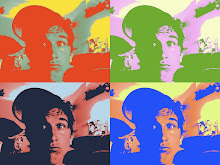8 MILE. . . hike
Welcome to the most enterainingness place you have ever been.

IF ever there was a video defined DORKY! It would most definitely be this one.
This video is for anyone who is a Glauser! For to be a Glauser is to know DORKY! (thanks to mom for setting the example all these years!)
I HOPE ALL OF YOU ENJOY! :)



One of the most important parts of the sweat lodge, and with all energy work, is to go into it with an intention! Tonight my intention is; To bring into my life new, fullfilling energies that make my heart sing! And also to open the doors to my next step on my Personal Legend!
Here's a little more info on sweat lodges from wiki:
The sweat lodge (also called sweat house, medicine lodge, or medicine house) is a ceremonial sauna and an important ritual used by some North American First Nations or Native American peoples. There are several styles of sweat lodges that include a domed or oblong hut similar to a wickiup, a teepee, or even a simple hole dug into the ground and covered with planks or tree trunks. Stones are typically heated in an exterior fire[1] and then placed in a central pit in the ground. Often the stones are granite and they glow red in the dark lodge.
During the ceremony, the participants encircle the stone pit inside the lodge. The medicine man, leader of the ceremony, or elder, perhaps better referred to as the pourer, receives the glowing hot stones from the firekeeper and places them in the pit, using a pitch fork and/or deer antlers[2]. When enough stones have been placed in the lodge, the medicine man (pourer) closes the door and pours water on top of the stones to fill the lodge with steam. This happens usually four times, with periods of between ten minutes to hours spent sweating in the lodge.
In Ojibway or Anishinaabe ceremonies, there are many songs sung with a drum and rattles, prayers given, and attempts to heal the sick. The lodge door is in the east, toward the sacred fire, and there are rattles for each of the directions. A fire keeper or helper outside passes the red hot granite stones, or grandfathers, into the lodge, and puts prayer offerings of tobacco into the fire. The grandfathers are placed into the pit at the center of the lodge. Before the ceremony, there is a cedar strip or line along the ground that is not to be crossed. The little boy water drum is often used in the ceremonies, along with certain medicines that are burnt on the hot stones. As each person enters the lodge on hands and knees, they say their name in Ojibway, and crawl, like a baby, into the womb of the lodge. The women sit on one side, and the men sit on the other. The sweat lodge represents birth and being born out of the darkness, the red glow, the warmth, the wetness, and the small space like a womb. One also crawls out of the lodge, humbled, and like a baby. Everything is usually done in a clockwise direction in the lodge, the same way as the sun travels across the sky. One enters in a clockwise direction, passes rattles clockwise, songs and prayers are given clockwise, and each one leaves clockwise. Most people get their traditional names during the ceremony, and offerings are given of tobacco, food, and other things. The little boy drum is ceremoniously prepared before each sweat lodge and tied in a certain way depending on the teaching given.
